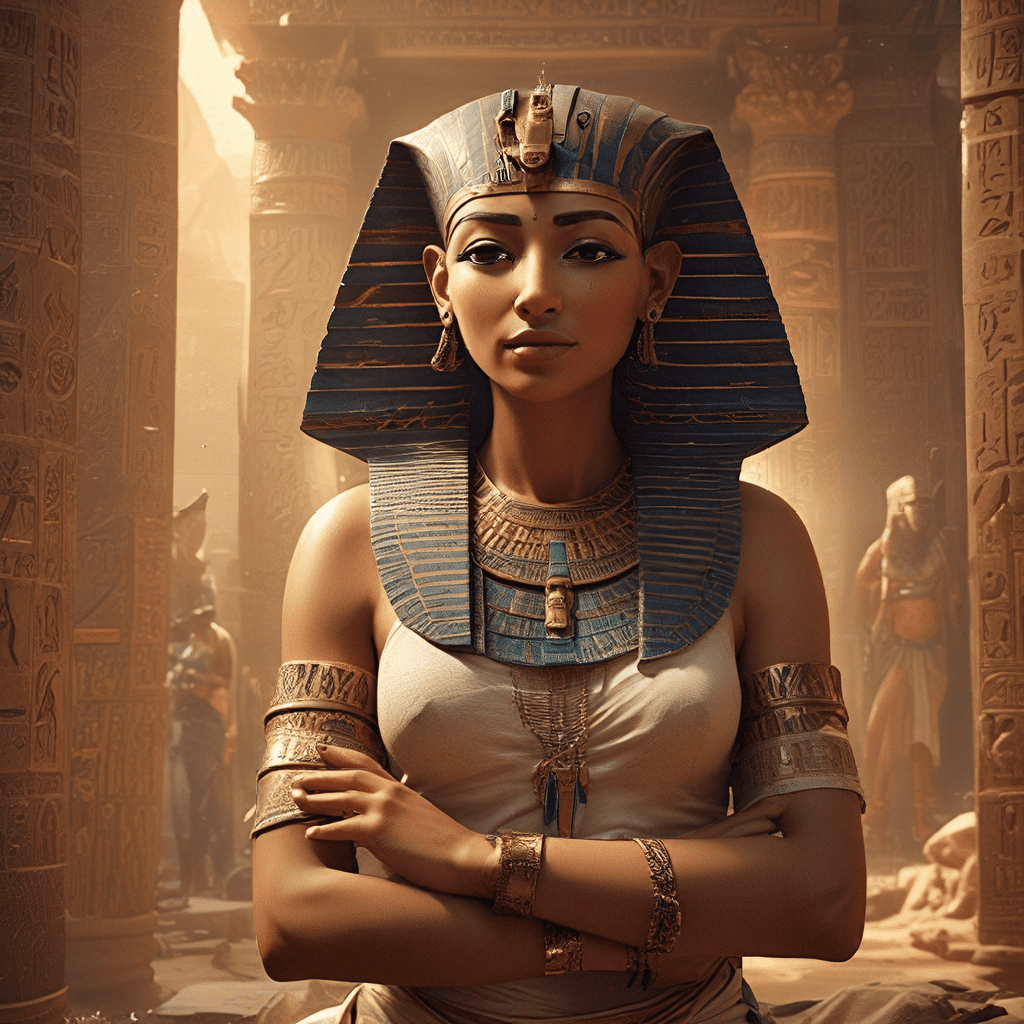1. Introduction: The Enigmatic World of Ancient Egyptian Magic
Ancient Egypt, a civilization renowned for its majestic pyramids, intricate hieroglyphs, and intriguing mythology, also held a deep fascination with magic. Magic was a powerful force that permeated all aspects of Egyptian life, from daily rituals to grand ceremonies. Ancient Egyptians believed that words, symbols, and rituals could influence the world around them and even interact with the divine. Ancient Egyptian magical texts, filled with spells, incantations, and mystical formulas, are a testament to their beliefs. Decoding these texts provides a unique window into the minds and beliefs of a civilization long gone.
2. The Power of Words: Understanding the Egyptian Magical Lexicon
Language was considered sacred in Ancient Egypt. The Egyptians believed that words possessed power, and that they could be used to influence reality. Like a magic key, certain words could unlock the hidden power of the universe. These special words, often referred to as “magic words,” were carefully chosen for their symbolic meaning and phonetic sounds. They were used in spells, incantations, and rituals to communicate with deities, banish evil, heal the sick, and ensure prosperity.
The Egyptian magical lexicon is rich with specific terms related to magic, spells, and rituals. For example, the word “heka” referred to the art of magic itself, while “sa” denoted the divine power of magic. The word “kheperu” signified the transformative power of magic, and “sekhem” represented the magical energy that could be channeled through objects and rituals. Understanding these terms is essential for deciphering the meaning of the magical texts.
3. Symbols and Hieroglyphs: Visual Language and Magical Texts
The ancient Egyptians used hieroglyphs, their iconic writing system, not only for recording history and literature but also for magic. Each hieroglyph represented a sound, a word, or a concept, and they held powerful symbolic meanings. Within magical texts, the arrangement of specific hieroglyphs, their placement, and their relationship to other symbols were crucial for achieving the desired magical effects.
The ancient Egyptians viewed the world as a network of interconnected forces, and hieroglyphs were believed to be a conduit to these forces. For example, the eye of Horus, a powerful symbol of protection and healing, was often used in spells for warding off evil and restoring health. The scarab beetle, representing creation and rebirth, was frequently incorporated into spells for resurrection and transformation. These symbols were not mere decorations but active components of the magical process.
4. The Book of the Dead: A Journey Through the Afterlife
The “Book of the Dead” is arguably the most well-known example of an ancient Egyptian magical text. This collection of spells and incantations was intended to guide the deceased soul through the perilous journey to the afterlife. The book was typically written on papyrus scrolls and buried with the deceased, providing them with a roadmap for navigating the treacherous underworld and securing a place in the presence of Osiris, the god of the dead.
The “Book of the Dead” is filled with vivid imagery and detailed instructions for overcoming obstacles, satisfying the gods, and achieving eternal life. It features spells for protecting the deceased from dangers, for navigating the underworld, for appealing to the gods for favor, and for being reborn into the afterlife. The language of the “Book of the Dead” is rich in symbolism, metaphor, and ancient Egyptian mythology, making it a fascinating and complex text that continues to captivate scholars and enthusiasts.
5. Spells and Incantations: The Art of Magical Language
Ancient Egyptian spells were meticulously crafted using a combination of words, symbols, and rituals. They often followed a specific format, usually starting with an invocation to a particular deity, followed by a statement of the desired outcome. The spell would then include a series of instructions, rituals, or offerings, designed to influence the divine forces and bring about the desired result.
A common feature of ancient Egyptian spells was the use of repetition. Words and phrases were often repeated numerous times to amplify their power and enhance their effectiveness. The repetition served as a form of incantation, believed to harness the power of words and channel it towards the desired outcome. Ancient Egyptians also employed rhythmic language and specific formulas, often invoking the names and attributes of the gods to harness their power for healing, protection, or other magical purposes.
6. Gods and Goddesses: Invoking Divine Power
The ancient Egyptians believed that their gods and goddesses possessed immense power that could be harnessed through magic. The names, attributes, and myths associated with these deities were carefully woven into spells and incantations. For example, invoking the name of Ra, the sun god, could bring light, warmth, and protection. Invoking the name of Isis, the goddess of healing, could bestow health and ward off disease.
Ancient Egyptians saw the gods as intermediaries between the human world and the divine realm. By invoking their names and reciting their myths, they sought to gain their favor and protection. The practice of invoking divine power was a central element of ancient Egyptian magic, permeating all aspects of their life, from everyday rituals to grand ceremonies.
7. Material Objects and Magical Practices: Inscriptions
Ancient Egyptians often inscribed magical texts on a variety of objects, such as amulets, scarabs, statues, and even the walls of tombs. These inscribed objects were believed to be imbued with magical power and could be worn, carried, or placed in specific locations to achieve a desired outcome. For example, amulets inscribed with protective spells were worn to ward off evil spirits. Scarabs inscribed with spells for resurrection were buried with the deceased.
The inscription of magical texts on material objects served as a physical embodiment of the power of words and symbols. These objects were seen not only as representations of magic but as active components of the magical process itself. The practice of inscribing magical texts on objects highlights the interconnectedness of language, material objects, and the realm of the divine in ancient Egyptian magic.




